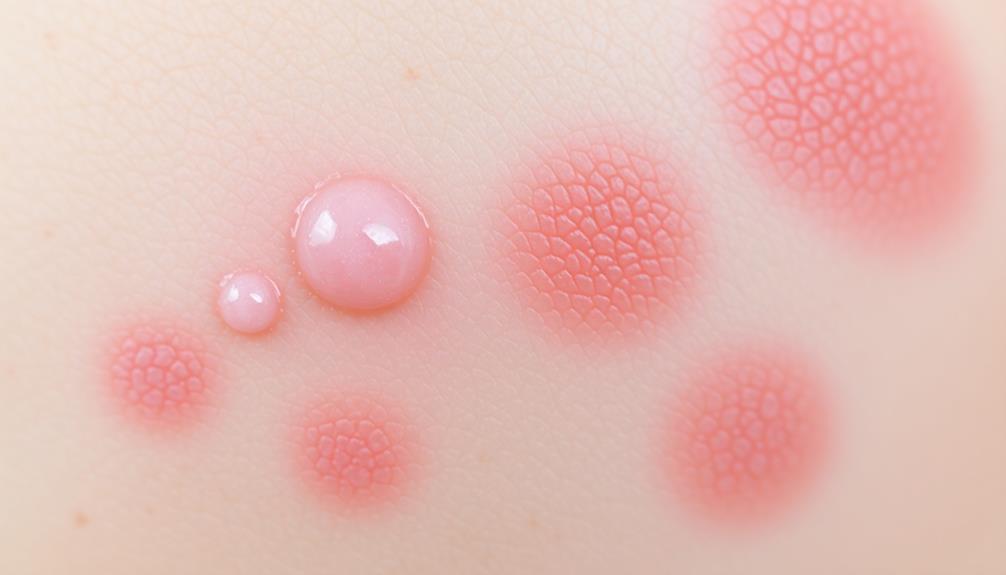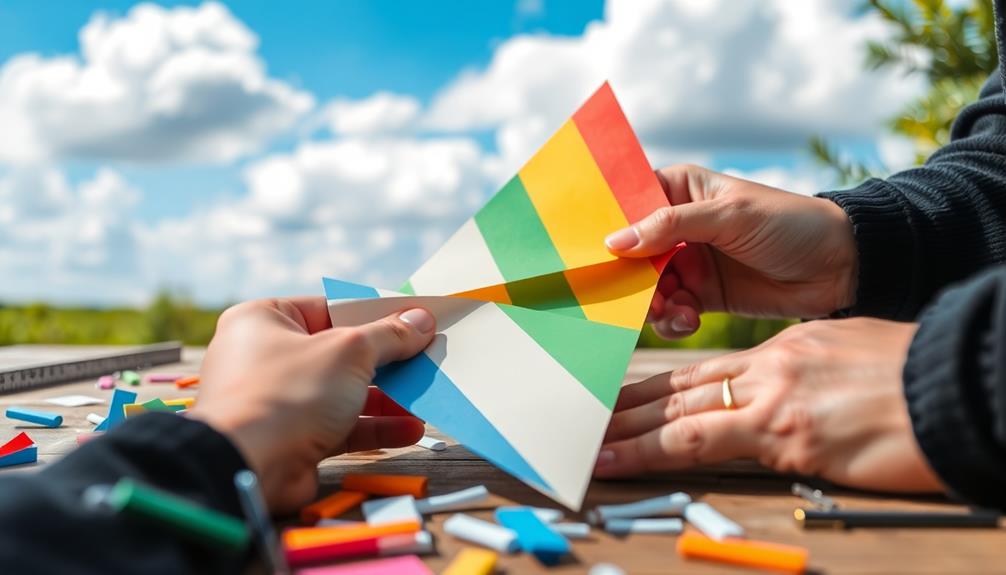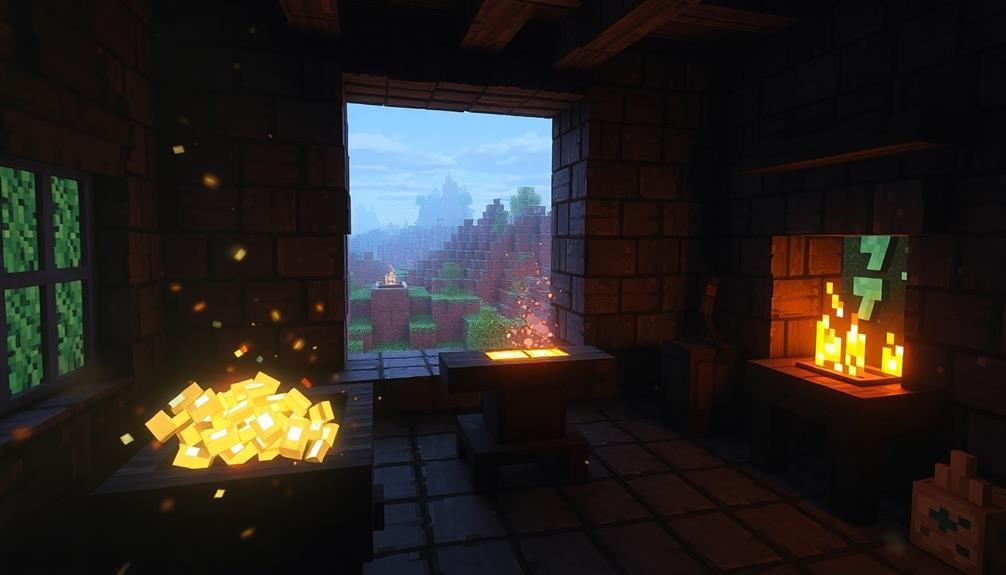You can easily create QR codes for free using online tools designed for customization and functionality. Start by selecting the type of QR code you need, like a URL or vCard. Most platforms let you customize colors and add your logo for brand representation. After you generate your QR code, you can test it to guarantee it works flawlessly. Many of these tools also offer tracking features to monitor how often your code is scanned. So, if you're curious about maximizing your QR code's effectiveness and design options, there's plenty more useful information ahead.
Key Takeaways
- Numerous online tools offer free QR code generation with various content types, including URLs and contact details.
- Most free QR code makers allow customization with colors, shapes, and logo integration to enhance brand identity.
- Users can create static or dynamic QR codes depending on their needs, with dynamic options allowing for later content updates.
- Many platforms provide download options in multiple formats, such as .png, .svg, and .pdf, suitable for different applications.
- Some free tools include tracking features in premium versions, helping users analyze scan performance and audience engagement metrics.
Overview of QR Codes
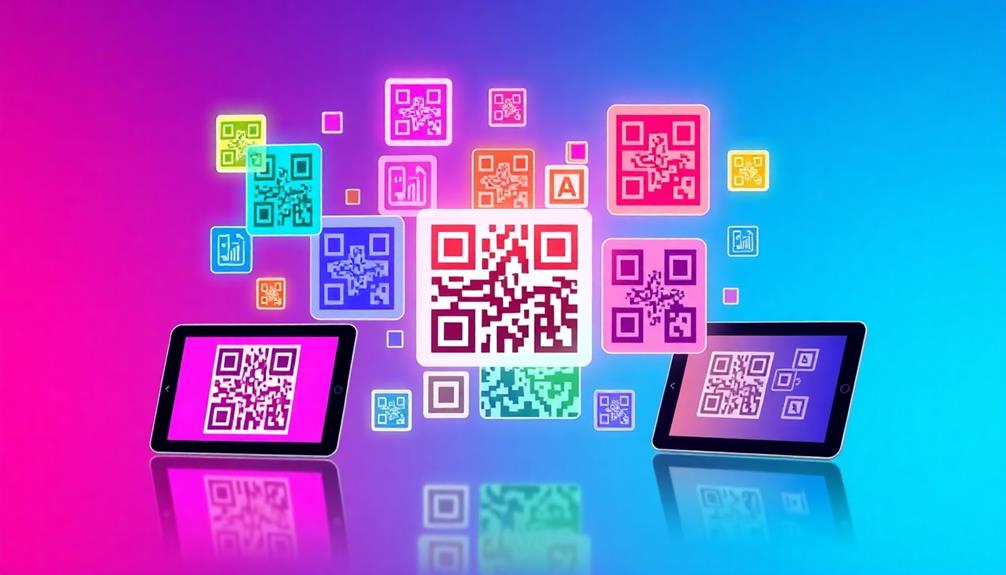
When you scan a QR Code, you're tapping into a technology that bridges the gap between the physical and digital worlds. QR Codes, short for Quick Response Codes, are two-dimensional barcodes capable of storing various types of information, like URLs, text, and contact details.
Originally developed for logistics by DENSO WAVE INC., their popularity has surged due to the instant access they provide via smartphones.
With a Free QR Code Generator, you can easily create QR Codes tailored to your needs. There are two main types: Static QR Codes, which are permanent and can't be edited, and Dynamic QR Codes, which allow for content updates and tracking of QR code scanning.
This flexibility makes them perfect for mobile marketing and enhancing customer engagement.
QR Codes can greatly improve marketing campaigns. By embedding information, businesses can direct customers to websites, promotional content, or feedback forms seamlessly.
The ability to store a substantial amount of data guarantees that users can connect effortlessly with digital content and services, making QR Codes an invaluable tool in today's fast-paced world.
Types of QR Codes
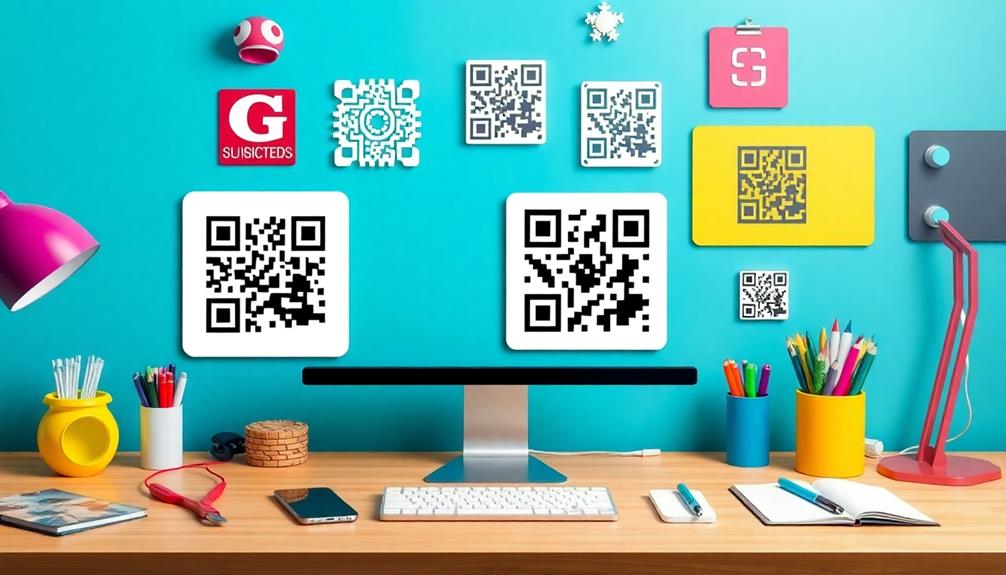
QR Codes come in various types, each serving a unique purpose and catering to different needs. One of the most common types is the URL QR Code, which directs users straight to a specific webpage or online content when scanned.
If you want to share contact information, vCard QR Codes are perfect; they let users save a person's details directly to their phone's address book with a single scan.
For brief messages, Plain Text QR Codes can display up to 300 characters, making them ideal for quick information sharing. If you're hosting guests, WiFi QR Codes simplify the connection process, allowing users to connect to a WiFi network without entering a password manually.
Another option is the Dynamic QR Code, which stands out because it can be edited even after creation. This feature allows you to update the content and track scan statistics over time.
With a free QR code generator, you can easily create different QR Codes tailored to your specific needs, enhancing engagement and accessibility for your audience.
QR Code Creation Process
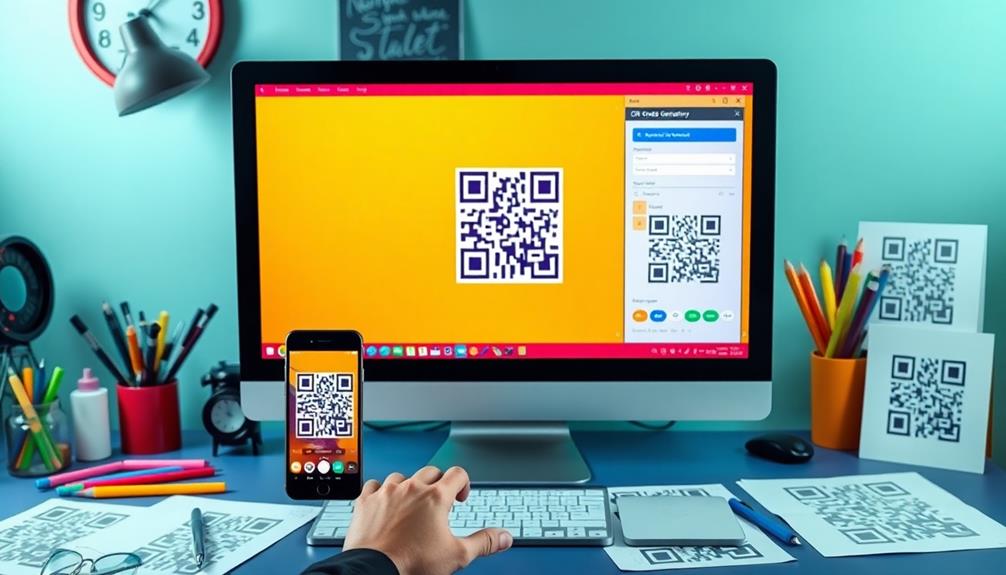
Creating a QR Code starts with selecting the content type, like a URL or plain text, and entering the required information accurately to guarantee everything works as intended.
After you've entered the information, you can proceed to customize your QR Code. Adjust elements such as colors and shapes, and if you want to make it stand out even more, you can add a logo.
Once you're satisfied with the design, preview the QR Code to verify it meets your specifications. This step is essential, as it allows you to catch any mistakes before you generate QR Code image files.
When you're ready, hit the generate button to create your QR Code.
Before you print or distribute it, remember to test the generated QR Code for scannability and functionality. This confirms that it works correctly for your audience.
Finally, take advantage of the various download options available, including .png, .svg, .pdf, and .eps formats, to guarantee your QR Code fits your needs perfectly.
With these steps, you'll have a functional, eye-catching QR Code ready to go!
Customization Features
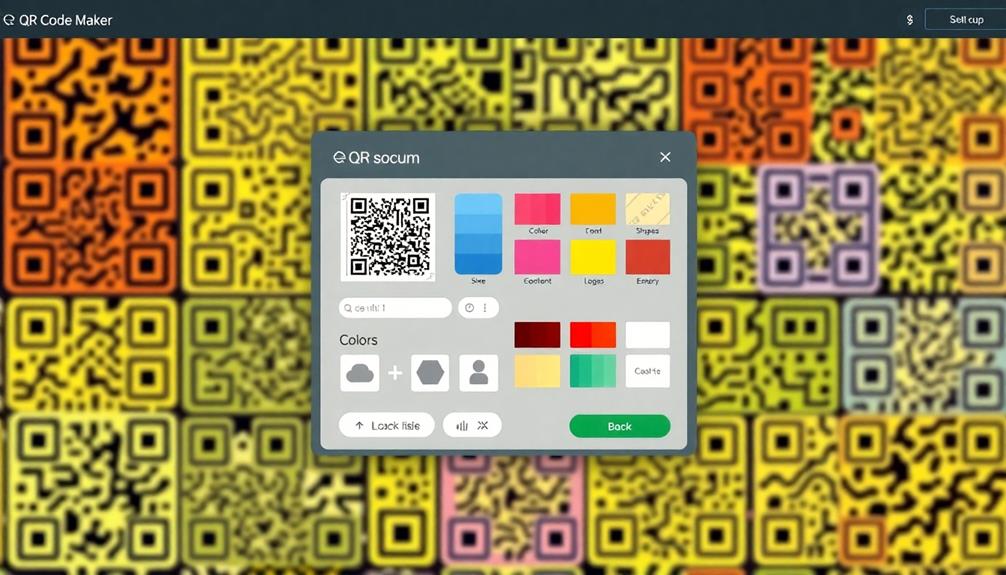
When you create a QR code, customization features let you design something that truly represents your brand.
You can easily integrate your logo and choose from a wide range of colors, ensuring your QR code stands out.
Plus, with various design options available, you can make your code not just functional, but also visually appealing.
Design Options Available
With a wide array of design options at your fingertips, the free QR code maker allows you to customize your codes to perfectly match your brand's identity.
You'll find extensive customization options that make your QR codes not just functional but visually appealing. Choose from over 16 million color combinations using #RRGGBB notation, ensuring your code aligns seamlessly with your branding.
Here are some features to evaluate:
- Logo Incorporation: Enhance brand recognition by adding your logo in various file formats like .png, .jpg, .gif, or .svg.
- Design Templates: Simplify the creation process with pre-designed options that maintain consistency across multiple QR codes.
- Pixel Resolution: Adjust the pixel resolution using a slider, ensuring high-quality outputs that are perfect for both digital and print applications.
The QR code generator also allows you to customize body shape, eye frame, and eye ball shape, giving you unique design aesthetics tailored to your preferences.
With these features, your QR codes won't only serve their purpose but also stand out, making a lasting impression on your audience.
Logo Integration Benefits
Integrating a logo into your QR code offers significant advantages for brand recognition and customer connection. By customizing your QR Code with your logo and brand colors, you create a visually appealing design that stands out and reinforces your identity. This connection can lead to increased user engagement and higher click-through rates.
You can easily upload your custom logo in various formats like .png, .jpg, .gif, or .svg, with a maximum file size of 2 MB. Plus, the error correction feature allows for up to 30% of your QR Code to be covered by your logo without sacrificing scanning functionality. This means you can maintain the code's effectiveness while enhancing its aesthetic appeal.
Don't forget about background removal features, which help seamlessly integrate your logo into the QR Code, ensuring it captures attention and remains scannable.
By using a free QR Code maker, you can effortlessly customize your codes to reflect your brand's personality. This integration not only elevates the look of your QR Code but also strengthens your brand's presence in the market.
Tracking and Analytics
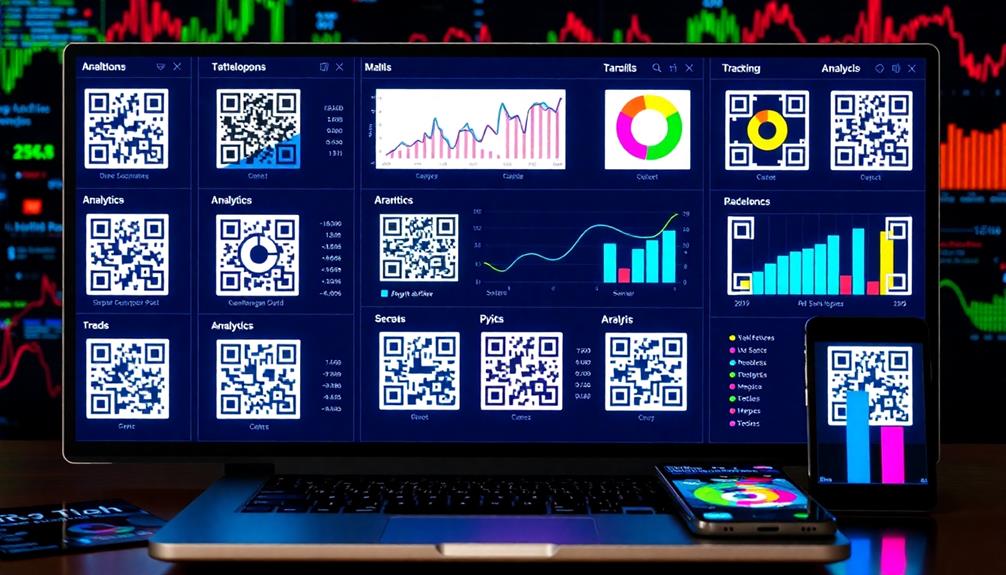
With the PRO version of QR Code generators, you can easily track scan counts and gain valuable insights into device metrics.
This data helps you understand your audience better and tailor your marketing strategies accordingly.
Scan Count Tracking
Tracking the performance of your QR Codes is essential for maximizing their effectiveness in your marketing efforts.
With scan count tracking, you can monitor QR Code scans in real-time and gain valuable insights. This feature, available in the PRO version of a QR Code generator, allows you to:
- Analyze peak engagement times to understand when your audience is most active.
- Discover the geographic locations of scans, helping you tailor your marketing efforts to specific regions.
- Gather device information to learn which operating systems and devices your audience prefers.
Device Metrics Insights
Device metrics insights offer a wealth of information that can greatly enhance your marketing strategies. By analyzing QR Code scans, you can uncover valuable data about the devices your audience uses. This information helps you tailor your campaigns effectively, ensuring you reach users where they're most active.
Tracking analytics reveals operating system distribution, showing whether your audience leans towards iOS or Android. This insight enables you to focus on optimization efforts for the platform that drives the most engagement. Additionally, by evaluating which QR Codes are popular on specific devices, you can better allocate resources and optimize designs for maximum impact.
Understanding user engagement trends through device metrics is essential. It helps you refine your campaigns, ensuring they resonate with your target audience. You'll discover which device types generate the most scans, guiding your future QR Code designs.
Browser Compatibility
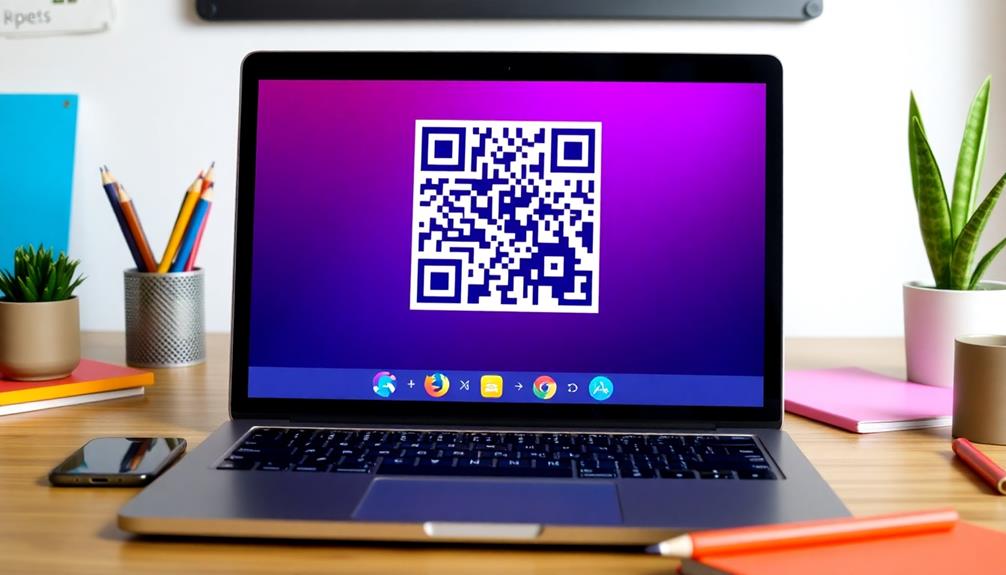
Guaranteeing ideal functionality when using a QR code generator hinges on browser compatibility. If you're using a tool like QRCode Monkey, it's vital to access it through HTML5 capable browsers. Supported browsers include:
- Chrome
- Firefox
- Safari
- Edge
- Internet Explorer 11
Using outdated browsers can lead to compatibility issues that hinder QR code generation and scanning. This can negatively impact your user experience, making it necessary to keep your browser updated.
Regular updates not only enhance QR code generation capabilities but also improve your overall interaction with the tool.
To guarantee consistent performance, it's a smart idea to test QR code generation across different browsers. This way, you can identify any potential issues and guarantee smooth functionality, regardless of the browser you or your audience may be using.
Legal Considerations
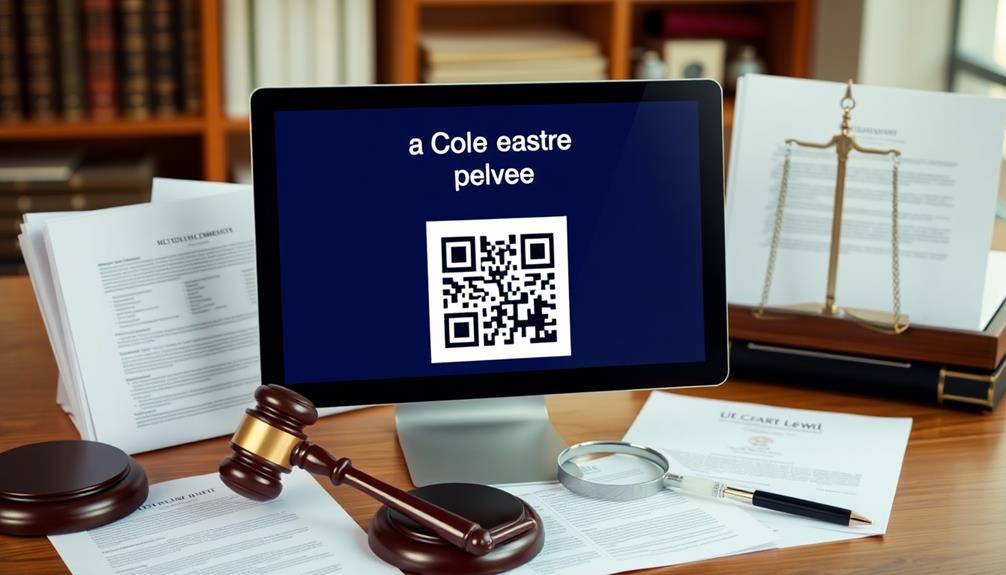
When creating QR codes, you need to be aware of the legal considerations that come into play. While QR Codes are free for usage without expiration, you must guarantee compliance with trademark rights, as they are a registered trademark of DENSO WAVE INC. Always verify the licensing terms of your chosen QR Code generator to understand your usage rights.
Here's a quick overview of key legal aspects to take into account:
| Legal Aspect | Importance | Action Required |
|---|---|---|
| Trademark Rights | Protects brand identity | Use the name "QR Code" correctly |
| Copyright | Prevents infringement on content | Check linked content for rights |
| Data Privacy Regulations | Safeguards personal information | Review linked content's data policy |
| Compliance | Guarantees legal adherence | Regularly update your knowledge |
| Free Usage | Allows unlimited scans | Confirm no expiration or restrictions |
Frequently Asked Questions
Can I Generate a QR Code for Free?
Yes, you can generate a QR Code for free! Many online tools let you create static QR Codes easily. Just enter your information correctly, and you'll have your code ready for digital or print use.
Is the Google QR Code Generator Free?
Yes, the Google QR Code Generator is free. You can easily create QR codes for URLs and other content types without any charges, and you don't need an account or subscription to use it.
Do Free QR Codes Exist?
Yes, free QR codes do exist. You can easily generate them online for URLs, plain text, or contact information. Just remember, once created, they can't be edited or tracked without generating a new code.
What Is the Best QR Code Reader for Free?
Did you know that over 90% of smartphone users have scanned a QR code? For the best free QR code reader, try QR Code Reader by Scan or Kaspersky's Scanner for speed and security. You won't regret it!
Conclusion
In a world where information travels at the speed of light, creating your own QR code is like crafting a key to access endless possibilities. With just a few clicks, you can customize and track your digital doorway, connecting you to your audience in ways you've only dreamed of. So, why wait? Immerse yourself in the domain of free QR code makers online, and watch as your ideas spring to life, bridging the gap between the physical and digital worlds.


